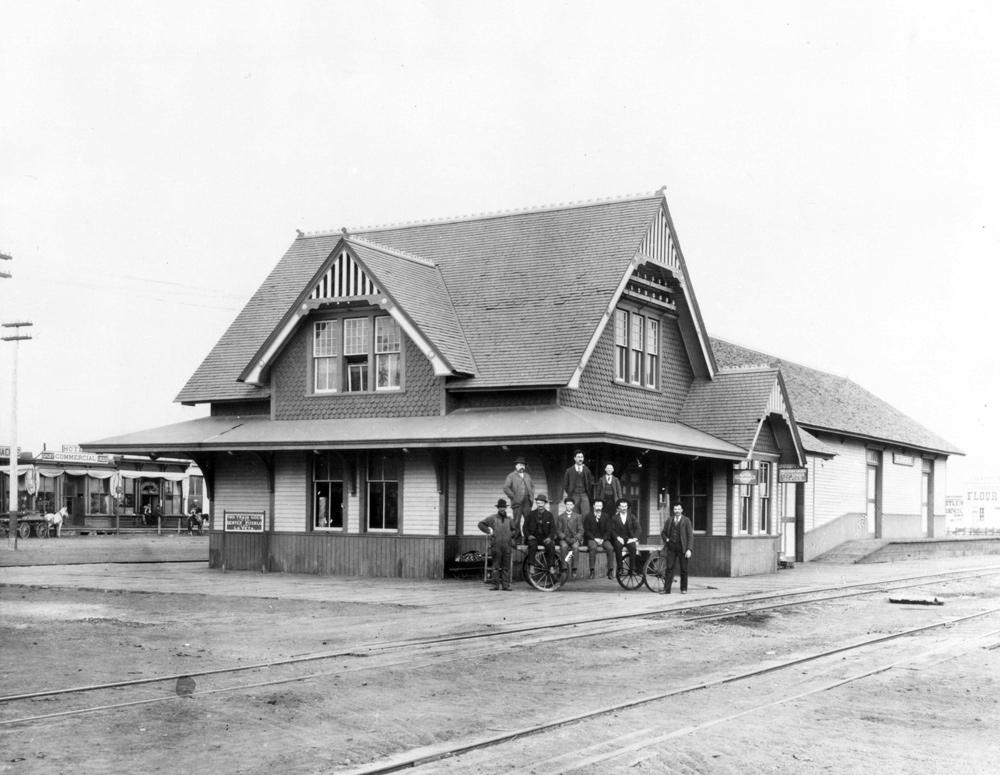Alamosa Denver & Rio Grande Railroad Depot
Full Article
The Alamosa Denver & Rio Grande Railroad Depot (D&RG), located at 610 State Street, was built in 1908–9 to replace the former depot, which had burned down the previous year. The depot operated as the central hub of rail shipping in the San Luis Valley until the 1950s. The D&RG Depot has also been referred to as the Alamosa Railroad Depot and the Alamosa County Depot Building. Today, the building is home to the Rio Grande Scenic Railroad as well as the Colorado Welcome Center of Alamosa.
Founding a City
Alamosa's history is inextricably tied to the Denver & Rio Grande Railroad (D&RG). Although Hispano ranchers and Anglo homesteaders had formed settlements throughout the San Luis Valley by the early nineteenth century, the location of the valley's economic center was ultimately determined by the railroad. The D&RG sought to connect the valley’s agricultural communities and San Juan mining districts to distribution and processing centers in central Colorado and northern New Mexico. The flat, inexpensive lands of the valley proved perfect for a rail line. The D&RG purchased more than 1,600 acres of land in 1877; the following year its line reached the site of a new depot, chosen for its location near the geographic center of the San Luis Valley and for easy access to the water from the Rio Grande River.
Alamosa quickly attracted settlers. Hoping for a fresh start and better economic opportunities, many residents of nearby Fort Garland dismantled their homes, loaded them onto rail cars, and re-installed them in Alamosa. Buildings such as the Occidental Hotel, Broadwell House, and Gem Saloon made the fifteen-mile trip to the new nexus of shipping in the San Luis Valley. The original 1878 rail depot attracted business, settlers, and wagon freight companies to the area. Locals relied almost exclusively on the railway to ship their produce, which included potatoes, alfalfa, carrots, cabbage, wool, sheep, cattle, and lumber. During the bonanza years of 1880–1893, the railroad hauled heavy mining equipment into the San Juan Mountains and returned with silver ore. Settlements far from the rail line found sustained growth nearly impossible.
On Christmas Day 1907, a fire destroyed the original 1878 Alamosa Depot. The D&RG quickly replaced the structure with a brick structure that still stands today. The new depot, completed in 1909, cost the railroad $17,500 and began operation immediately. The two-story, L-shaped depot was built in the Commercial and Mediterranean Revival architectural styles, with a ceramic tile roof that evoked the area’s Hispano heritage. The original interior held two waiting rooms, a lobby, a main office, a baggage room, and an express room. A western section was added in 1930. The new structure continued the work and legacy of the former depot and served as a division headquarters for the D&RG into the 1930s.
Modern Use
Partly because of the expansion of the interstate highway system, railroad traffic declined in the mid-twentieth century, and the Alamosa D&RG Depot closed in the 1950s. In 1961 the D&RG Railroad sold the depot to Alamosa County, which used the space for county offices. The building saw few alterations until 1989 when interior renovations produced smaller, more space-efficient rooms for office use. For the next decade, employees of the Alamosa County Department of Social Services occupied many of the offices. The Alamosa Railroad Depot was listed in the National Register of Historic Places in 1993.
In 2006 Iowa-Pacific Holdings purchased the building as the headquarters of its new Rio Grande Scenic Railroad, which offered a passenger excursion service from Alamosa to La Veta. The scenic line used refurbished passenger cars and both steam and diesel locomotives. It connected with the Cumbres & Toltec Scenic Railroad in Chama, New Mexico. In 2009 another set of interior renovations made space for the Colorado Welcome Center of Alamosa inside the historic depot.




